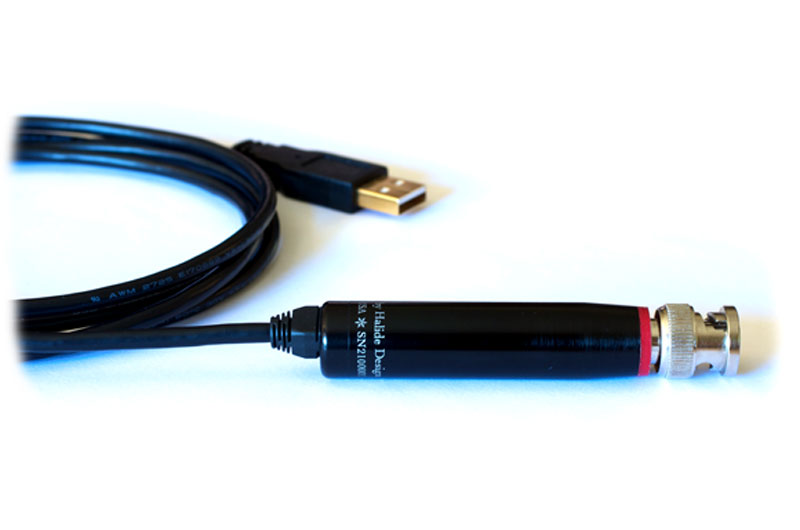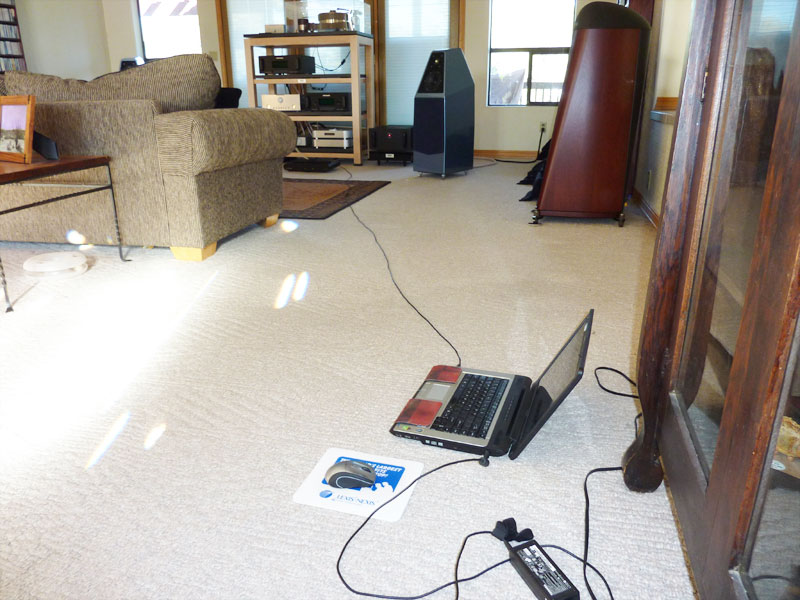Over the Bridge: A Shortcut to Computer Audio
Fast-forward almost two decades, and the computer has become a viable, convenient and low-cost digital source component. Along with this, standalone DACs are more prevalent than ever -- ones with a computer-derived USB input, that is. It is into this landscape that the Halide Design S/PDIF Bridge ($450) comes. It may be the most aptly named product in all of high-end audio, spanning the gap between computers and existing audio systems, as well as eras of digital playback.
The S/PDIF Bridge is an integrated digital-to-digital converter and USB-to-S/PDIF digital cable with either RCA or BNC termination on the downstream end. It does no digital-to-analog decoding of its own, but it does implement Gordon Rankin's Streamlength asynchronous technology for sending along the digital stream from a computer with the least amount of jitter. In the common isosynchronous or adaptive approach, the DAC is slaved to the computer. Because the computer handles many different processes at once, timing errors -- jitter -- are introduced, affecting sound quality in detrimental ways. Streamlength solves this serious problem by turning the digital-playback chain around. The low-jitter master clock located in the S/PDIF Bridge controls the audio transfer rate from the computer, and jitter is reduced significantly. Perhaps more important, however, the S/PDIF Bridge accomplishes this with the standard Windows or MacIntosh USB drivers, preserving the ease of plug-and-play installation. The S/PDIF Bridge packs a great deal of high-tech circuitry into a very small space: the CNC-milled aluminum barrel of the RCA or BNC connector. Its Texas Instruments input receiver includes a microprocessor that runs the Steamlength software, and its onboard power filter regulates the DC it receives through the USB connection. It has two master clocks, one that runs at 44.1kHz and its multiples and the other at 48kHz. Only one is active at a time, though, depending on the sampling rate of the source. This ensures that all data are handled without resampling. Maximum resolution is 24 bits and 96kHz. To test the S/PDIF Bridge for the purposes of this blog, I decided to take a casual approach that aligns perfectly with my personal audio reality. I have only toyed with using a computer to play music, perhaps because the only DAC I own -- the fine-sounding Timbre TT-1, which is approaching 20 years old -- has no USB input. This is just the combination of apathy and antiquated hardware the S/PDIF Bridge was created to address. I decided to see how potentially fraught with aggravation merging my Windows Vista laptop -- the same one on which I do all of my work for The Audio Beat -- and my audio system would be. If you are reading this article because you're interested in the S/PDIF Bridge, I'm assuming you may be in the same position. Users of USB-ready DACs will have already addressed these issues.
I began by downloading and installing foobar2000 v1.1.1, the software package that, among other things, streams digital audio to the external DAC. Halide Design recommends foobar2000 or J.River for use with the PC, and I chose the former because it's free and therefore in keeping with the nonchalant way in which I was implementing digital playback via computer. Next, I connected the S/PDIF Bridge to my laptop's USB port and my DAC's RCA digital input, using a 15' extension in between. Windows immediately recognized it and installed the necessary drivers. Finally, I ran foobar2000, using a directory of .WAV files as the source. The music played through the laptop's speakers, signaling that some configuration was necessary. After enabling the S/PDIF Bridge in Windows Control Panel and then setting its output to 48kHz (which my Timbre DAC supported), I tried again. The DAC locked and music poured forth from the speakers. The entire installation, including downloading and installing foobar2000, took less than 15 minutes. I asked the people at Halide Design to send both the RCA- and BNC-terminated versions of the S/PDIF Bridge, so I could use the latter with a Genesis Digital Lens. If you're a longtime audiophile, you know about this nearly nondescript black box. It is a superior jitter-elimination device that holds musical data in a small buffer, strips them of track and time information, reclocks them, and then outputs a jitter-free digital stream. The Digital Lens has been discontinued for years, and it works only with CD-resolution data. Yet it is still a popular product on the used market, probably because audiophiles with computer-based playback systems are rediscovering how effective it is. The Digital Lens was sold at a time before USB was a twinkle in any engineer's eye, so the S/PDIF Bridge seems like the easiest way to add a Lens between computer and DAC. Following installation of the RCA-terminated S/PDIF Bridge, the BNC-terminated version required nothing more than connecting it. The Digital Lens locked on to its output without a hiccup. I'm sure you're wondering about the sound quality of the S/PDIF Bridge. Pretty darned good is my answer. I played a selection of music that is on the CD-R I will take with me to CES. These are cuts I'm very familiar with, and they sound uniformly very good -- even exceptional -- on a well-balanced audio system. Played from my laptop at CD resolution (I ripped them with Exact Audio Copy), they sounded, well, uniformly very good -- even exceptional. I've not done any direct comparisons between playback from computer and a dedicated CD transport, but I can assure you that I will. I will also delve more deeply into the convenience of playing music with foobar2000 -- creating hours-long playlists, the end of a CD never meaning the end of the music. But I play records, so it's the quality of the experience that matters most to me -- and to you, I suspect. Still, the S/PDIF Bridge couldn't be any easier to
install, and its smart technology seemed effective in sonic terms. I will have more to
offer as this ongoing journey continues. |


